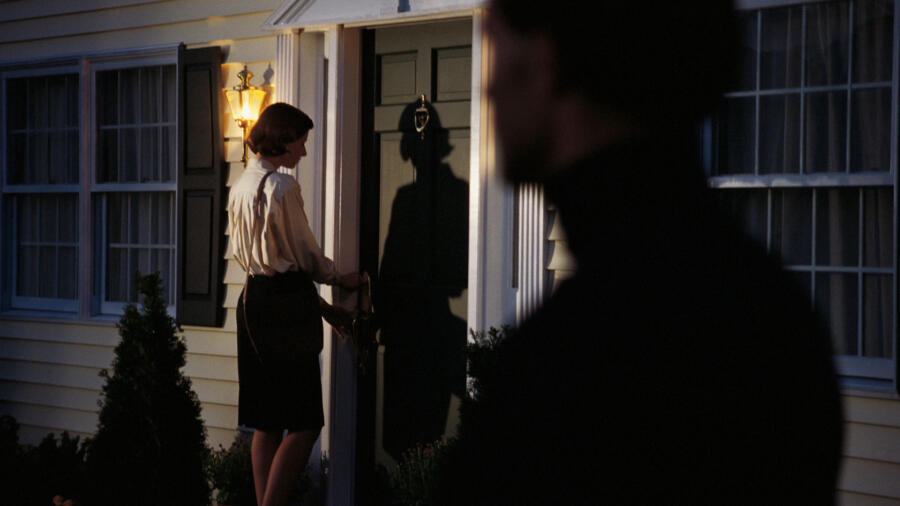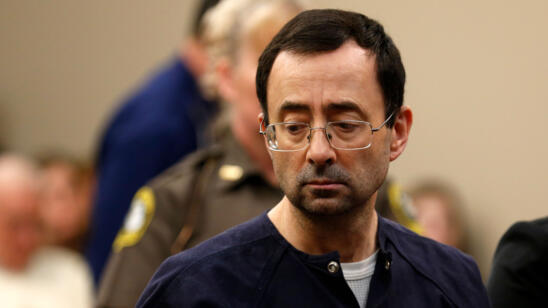On the evening of May 29, 1999, Kathy (Kate) Ann Jewell fled her home in Gold Beach, Oregon. She was running from her boyfriend, John William Branden, who had just raped her and attempted to kill her. After that, he disappeared, and she spent several years trying to ensure he didn’t find her and hurt her again, while also trying to locate him to prevent him from harming anyone else. Ultimately, police and FBI agents did not catch him, and the story ended as Jewell feared it would—with Branden killing a later partner, as well as himself.
This real-life horror story, originally written about by Ann Rule in the true-crime collection Mortal Danger, inspired the Lifetime original movie Sleeping With Danger.
Learning His Pattern
Kate Jewell, a flight attendant for American Airlines, met John Branden in the fall of 1989 when she made an appointment with him at his business, the Bayview Medical Group in San Diego. The 44-year-old ran a company, along with his wife Sue and his daughter, focused on nutrition and “natural medicine.” That December, Branden confessed he was falling in love with 38-year-old Jewell, and they began dating. The next year, he separated from his wife to be with Jewell.
Unbeknownst to Jewell, at the same time, Branden was wooing her, his neighbor was suing him for “peeping” at her through her windows. Within the year, he would also begin sessions with a female client who’d go on to sue him for “medical malpractice, sexual battery, failure to obtain informed consent, assault and battery, fraud and misrepresentation,” writes Rule in Mortal Danger. (Rule is best-known for The Stranger Beside Me, a book about her former coworker, serial killer Ted Bundy.)
The former client suing Branden noted that he wasn’t a medical doctor and wasn’t licensed to provide many of the services he performed, including massage, vaginal exams, drug prescriptions and blood draws (which he performed on Jewell when she was his client).
Jewell vaguely knew about the second lawsuit, but Branden lied about the details and insisted he’d done nothing wrong. After the suit’s dismissal in 1993, Branden handed his business over to his daughter, stopped going into the office and grew a beard and long hair to disguise himself. He started routing his outgoing mail through Jewell’s sister who lived in Florida, to make it seem as though he were a Florida resident no longer living in California. It was a disappearing scheme he’d repeat when Jewell charged him with her assault years later.
Jewell also began to notice a rage in Branden she hadn’t seen before. When he was mad, he might punch or kick holes in a wall. Once, he hammered a ring he had given her to pieces. The worst of his rage emerged after they’d moved to Gold Beach on May 29, 1999, when he raped her, tied her up, held a knife to her throat and threatened to cut her up and throw her remains into the ocean. Though naked and barefoot, Jewell escaped and made it to a neighbor’s house.
“He had promised her that this was the night she was going to die,” Rule writes, “and she didn’t doubt his intention.”
Hiding and Seeking at the Same Time
Jewell filed charges against Branden in Curry County, but he soon disappeared, making it impossible to take him to court. Less than two weeks after the attack, he sent a letter postmarked in a small town in Oregon to her post office. Knowing his history of routing his mail through Florida to hide his location, she assumed he wasn’t really there.
A month after the attack, Jewell received a call from an ACLU attorney who said Branden had contacted his agency. The lawyer hinted Branden would come forward if Jewell would help make sure prosecutors sought a lower sentence than typically handed down for his crimes, but he refused to provide any contact information for the fugitive. She still didn’t know where Branden was, and found herself constantly looking over her shoulder.
Jewell suspected Branden’s daughter was helping him hide or sending him money. Yet Jewell was also afraid to keep talking to the daughter, lest she reveal anything about her own location to Branden.
By July, the FBI began working on the case, and Jewell cooperated with the bureau and the Curry County Sheriff’s Office in attempts to locate him. At the same time, Jewell was trying to make headway with the case to find Branden and prevent him from harming her or any other woman, she also had to rebuild her life and try to prevent Branden from finding her.
She decided to move to Orcas Island in Washington State. There, she would introduce herself as “Kris White.” She continued using her legal name and Social Security number at her job at American Airlines, but convinced the company not to give out her contact information or even reveal that she worked there.
While moving out of her Gold Beach home, she got another letter from Branden, this one postmarked in San Francisco. In it, he pleaded with her to ask prosecutors to seek a lighter sentence, and also indicated he thought she’d keep living in Gold Beach. She was pleased Branden still thought she was in that area, and to throw him off her trail even more, she took a page from his book by asking a friend in Nepal to send letters to her friends and family that they could use to convince Branden she was out of the country if he ever showed up looking for her.
Branden’s Discovery
Even though Jewell managed to stay physically safe from Branden on Orcas Island, she always suspected he was looking for her. Sometimes, she received unsettling hang-up calls. Eventually, she realized that she couldn’t keep looking for him forever, and had to move on to protect and care for herself.
“Stalking victims often have to absolutely toe that line between being the investigator and figuring out how best to protect themselves,” T.K. Logan, a behavioral science professor at the University of Kentucky who studies stalking, tells A&E True Crime. Protecting oneself from the perceived threat of stalking is “not just a toll on your psychology, it’s also [a toll] on your physical health,” she says.
In 2007, news broke that a man living a few hours south of Jewell in Gig Harbor, Washington had murdered the woman he called his wife, 66-year-old Turid Bentley, injured their friend, 49-year-old Randall Nozawa, and killed himself. Investigators soon discovered that the murderer, who went by the name “John Williams,” was actually John William Branden, who’d been living in hiding all this time.
After learning that Branden had murdered a woman, Jewell expressed survivor’s guilt. This is “a very normal human reaction to a predator who has not been held accountable for his actions,” Logan says. Even though it is the abuser, not the survivor, who is at fault, “the victims of all predators typically feel guilty.”
The next year, Rule published her book featuring Jewell’s story. Speaking with The Islands’ Sounder about the book, Jewell said she wanted Rule to tell her story so that she could help other women recognize and escape from abusive relationships.
“I’ve had this sense that because I survived, I have a duty to others,” she said. “I told my story to Ann with the hope of helping someone else not go where I have been.”
Related Features:
Who Is ‘Dirty John’ John Meehan?
Watch: Sleeping With Danger
‘Silence Is Not an Option’: Lorena Gallo Tells Her Story in ‘I Was Lorena Bobbitt’


